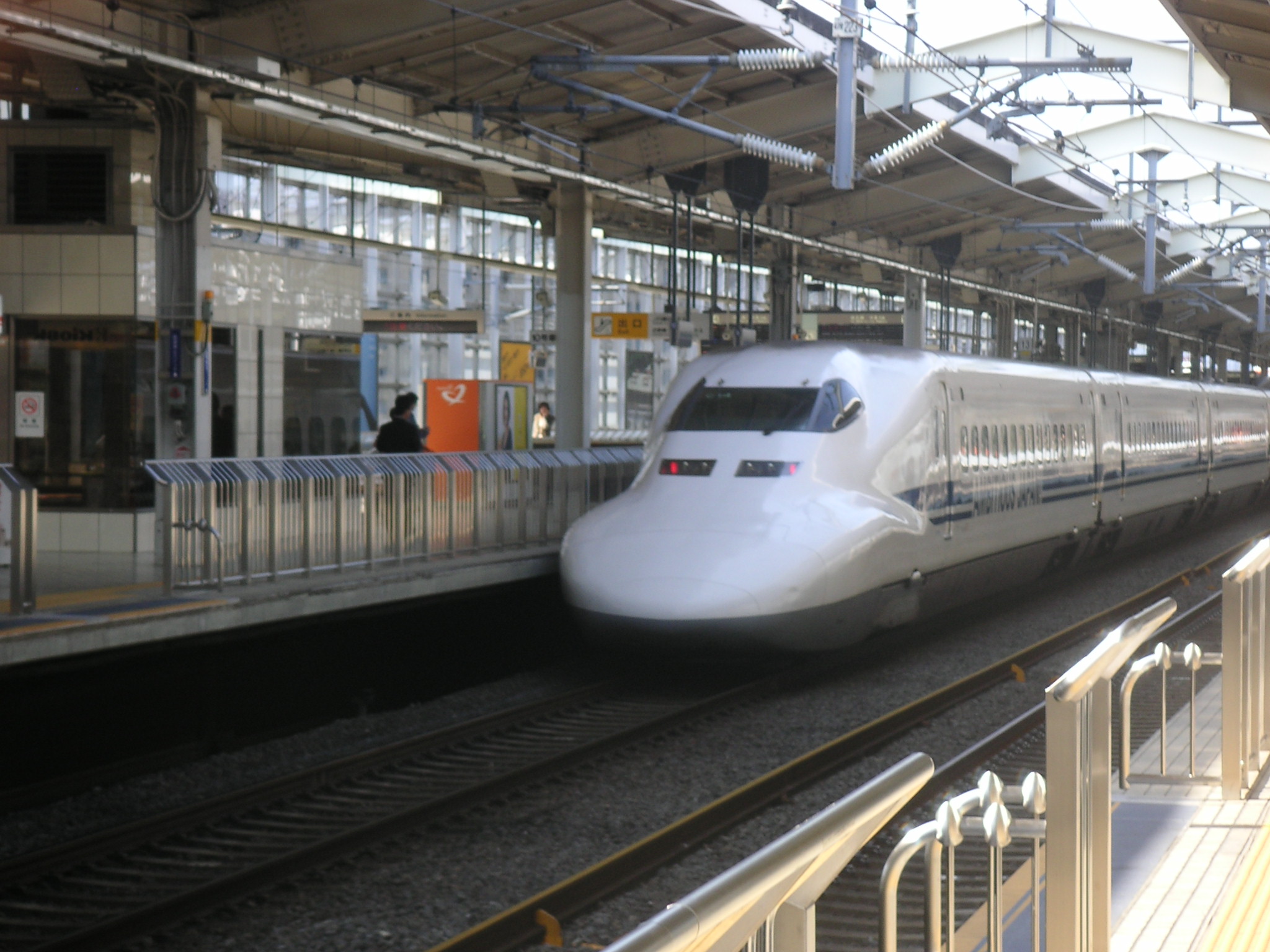Like many Japanese cities, Kyoto has an excellent and rather intricate public transportation system. There are multiple companies that run trains and buses, but you can take any of them these days with the IC card, which also works for all other means of transportation throughout the entire country.
There are six train lines in Kyoto. The JR (Japan Rail) line is the largest. It connects Kyoto with many other locations, including also Kansai Airport, and centers at Kyoto Station between Shijijo and Hachijo streets. Trains run frequently and are very comfortable. The Shinkansen (Bullet Train) to major cities is part of its system, but has to be paid separately from the IC card. Its tracks and boarding section are located at the south end of Kyoto Station.
The city subway has two lines, north-south (Karasuma) and east-west (Tozai). The first goes through Kyoto Station and reaches north to the International Conference Hall and south to connect to other private railways. The second runs along Oike Street, a short block north of Sanjo, from Nijo Castle in the west to Yamashina and Mt. Daigo in the east. We do not usually use it: our trails take other in other directions.
Another line we do not use is called Kintetsu. Its terminus is at the south end of Kyoto Station, right near the Shinkansen, and it reaches to the south and east, through Nara and towards Ise. Unlike most other lines, it charges more for faster trains.
Closer to the city center and away from the Station are two lines that specifically link Kyoto with Osaka. The Hankyu line is right next to our hotel. It runs east-west under Shijo Avenue and terminates at Umeda Station in the center of Osaka. It is also convenient to reach the western Kyoto suburbs of Katsura and Arashiyama and can be used to connect to the monorail that serves the domestic airport of Itami.
Next is the Keihan line, which we use a lot. It runs north-south along the river, right across the bridge from the hotel. We take it north when we go to Mount Kurama and south when we visit the fox shrine at Fushimi Inari. We will also use it when we go to Uji and Nara, transiting to the JR line at Tofukuji in the southeast section of the city, and again when we leave Kyoto for Mount Koya. In the latter case, we take the limited express all the way to Kyobashi at the northeast edge of Osaka and from there transit to the Loop Line, which in turn connects to yet another private railway which services Mount Koya.
Last, but not least, is the small trolley-type railway known as Keifuku or Happy City, which we take when we go to the northern mountains (Kurama, Hiei). It is quaint and not fast but very scenic. One branch of it also links the western scenic area of Arashiyama with Shijo Omiya, two long blocks or a short bus ride from the hotel, offering a way back from there that does not involve an hour-long bus trip.
In addition to this, there are three bus lines. Most important among them is the city bus system, consisting of light green buses that charge a flat fare (¥230), so you only have to tap your IC card once. Enter in the back, pay and exit in the front. The 200-numbered lines are loops, covering different areas of the city. Announcements on all buses are in Japanese, English, Chinese, and Korean; stations are clearly marked and show how soon the next bus will arrive.
Two lesser lines are the Kyoto Bus and the Keihan line, brown and red respectively. They run beyond the city to villages further out or up to Mount Hiei, and usually have different fare zones. It is necessary to tap the card both as you enter and exit—again moving back to front. We will use them, but not as frequently as the city buses.
Overall, the transit system works beautifully and serves us well as we get from one point to another, utilizing in all cases the most convenient and most economical options.

Leave a Reply